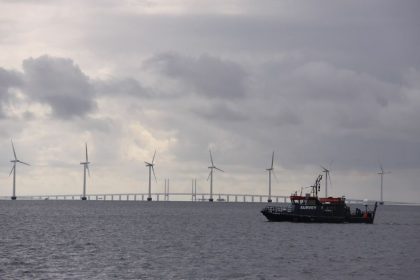Duke Energy CEO Tells Shareholders Its Use of Renewables is Growing Rapidly

CHARLOTTE, N.C. – Attendees at Duke Energy’s annual shareholders’ meeting last week heard nothing but good news when it came to the utility’s multi-year transition to renewable and other clean energy sources.
Speaking to shareholders on Thursday, Lynn Good, Duke Energy’s chair, president and CEO said the utility retired nearly 1,000 MW of coal in the past year, bringing the total retired at facilities in the Carolinas and Indiana to about 7,500 MWs retired since 2010.
At the same time, Duke surpassed 10,000 MW of owned, operated and purchased renewables on its system and it remains on track to reach 16,000 MWs of renewables by 2025 and 24,000 MWs by 2030.
“Our more than 27,000 teammates rallied behind our mission to achieve net-zero emissions by 2050. Our promise is to continue this momentum,” Good said in a statement distributed by the company .
“Our five-year enterprise capital plan includes $63 billion of investment, and 80% is directed to our clean energy transition,” she added
Among the highlights of remarks, a company press release said, was her announcement the company had filed for “Subsequent License Renewal of Oconee Nuclear Station – our largest nuclear plant – and we plan to file requests for our remaining units to maintain this vital source of carbon-free energy for another 20 years.
“We worked with stakeholders to help achieve bipartisan support in what’s been called the most comprehensive piece of energy legislation in North Carolina history — setting the course for carbon reduction and regulatory reform.
“We [also[ look forward to delivering a Carbon Plan to the North Carolina Utilities Commission later this month that will map out a variety of paths to achieve a 70% carbon reduction,” she said.
Good said a number of factors contributed to success in this area including its having taken aggressive action this year to “expand[] our net-zero emissions goal to include Scope 2 and certain Scope 3 emissions.”
“We also announced we’re targeting energy from coal to represent less than 5% of our total generation by 2030, and a full exit by 2035,” she said in the press release.
“We look forward to continued progress on our goals across our jurisdictions – retiring coal units, adding renewables and battery storage, investing in the grid, advocating for new zero-emission technologies, and collaborating with state and federal policymakers, regulators and stakeholders to meet the unique needs of each state,” Good added.
Dan can be reached at [email protected] and @DanMcCue

























